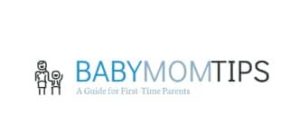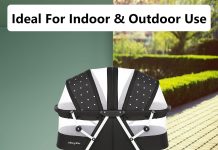Looking for the perfect crib to keep your little one safe and sound? Look no further! In this article, we’ll guide you through the different types of cribs available on the market and help you make an informed decision for your baby’s sleep environment. From traditional wooden cribs to modern convertible designs, we’ve got you covered. So, let’s explore what kind of cribs are safe and create a secure haven for your bundle of joy. Let’s get started!
Review contents
What kind of cribs are safe?
Types of cribs
When it comes to choosing a crib for your little one, it’s important to consider the different types available. Understanding the features and benefits of each type can help you make an informed decision. Here are the four most common types of cribs:
1. Standard cribs
Standard cribs are the most popular and widely used type of baby cribs. They typically have four fixed sides, a solid headboard, and a slatted footboard. This classic design provides stability and durability, ensuring the safety of your baby while they sleep. Standard cribs come in various styles, colors, and finishes, allowing you to find one that matches your nursery decor.
2. Convertible cribs
Convertible cribs are designed to grow with your child. These versatile cribs can be converted into different bed types as your child transitions from infancy to toddlerhood and beyond. With adjustable mattress heights and the ability to transform into a toddler bed, daybed, or even a full-size bed, convertible cribs offer excellent long-term value. They are ideal for parents who want a crib that can evolve with their child’s changing needs.
3. Portable cribs
Portable cribs, also known as travel cribs or playards, are lightweight and foldable cribs that are easy to transport. They are perfect for families who frequently travel or visit relatives and friends. Portable cribs provide a safe and comfortable sleeping environment for your baby while on the go. Look for portable cribs with sturdy construction, easy setup and disassembly, and additional features like a changing table or storage compartments.
4. Bassinets
Bassinets are smaller, intimate sleeping spaces designed for newborns and infants. They are typically used during the first few months of a baby’s life when they require close proximity to the caregiver. Bassinets offer the advantage of being portable, allowing you to keep your baby by your bedside at night. When choosing a bassinet, ensure it has a firm mattress, breathable sidewalls, and convenient features such as a rocking or gliding motion.
Safety features to look for
Regardless of the type of crib you choose, there are certain safety features that you should always look for. These features will provide added peace of mind and ensure the well-being of your baby:
1. Sturdy construction
A sturdy crib is crucial for your baby’s safety. Look for cribs made from durable materials such as solid wood or high-quality metal. Check the stability of the crib by giving it a gentle shake to ensure it doesn’t wobble or feel flimsy. Avoid cribs with loose or weak joints, as they may pose a safety hazard.
2. Fixed sides
Cribs with fixed sides are considered safer than those with drop sides. Drop-side cribs have been banned in the United States due to safety concerns, as they can accidentally collapse or create large gaps that pose entrapment or suffocation risks. With fixed sides, there is no risk of the sides accidentally falling down, providing a secure environment for your baby.
3. Mattress positioning options
Adjustable mattress heights are an important safety feature in cribs. As your baby grows and becomes more mobile, you’ll want to lower the mattress to prevent them from climbing out. Look for cribs with at least two or three mattress height positions, allowing you to adapt the crib to your child’s developmental stage.
4. Gap size between slats
The gaps between the crib slats play a crucial role in preventing your baby from getting trapped or injured. The Consumer Product Safety Commission (CPSC) recommends that the gaps be no wider than 2 3/8 inches. This ensures that your baby’s head or limbs cannot get stuck between the slats, reducing the risk of injury.
5. Non-toxic materials
To protect your baby from harmful chemicals, look for cribs made from non-toxic materials. Choose cribs that are certified to meet safety standards such as GREENGUARD Gold or JPMA (Juvenile Products Manufacturers Association) certification. These certifications ensure that the crib has been tested for hazardous substances and meets rigorous safety requirements.
6. Certification standards
When shopping for a crib, look for those that meet or exceed safety standards set by organizations such as the CPSC and ASTM International. The JPMA certification mentioned earlier ensures that the crib has been tested to meet or exceed these standards, giving you confidence in its safety and quality.
Recommendations for safe crib use
Once you’ve selected a safe crib, there are several guidelines to follow to ensure your baby’s safety:
1. Positioning
Place the crib away from windows, curtains, blinds, cords, and any other potential hazards that could pose a suffocation or entanglement risk. Keep the crib away from radiators, heaters, and direct sunlight to maintain a comfortable sleeping temperature.
2. Mattress fit
Ensure that the mattress fits snugly into the crib with no gaps between the mattress and crib walls. A loose-fitting mattress can pose an entrapment hazard for your baby. Additionally, use a firm and flat mattress that provides ample support for your baby’s growing body.
3. Safe sleep environment
Create a safe sleep environment for your baby by following the ABCs of safe sleep: Alone, on their Back, in a Crib. Avoid using soft bedding, pillows, stuffed animals, or crib bumpers, as they increase the risk of suffocation or Sudden Infant Death Syndrome (SIDS). Dress your baby in a sleep sack or wearable blanket instead of using loose blankets.
4. Avoiding hazards
Regularly inspect the crib for any loose or missing parts, such as screws or bolts. Avoid hanging anything above the crib, like mobiles or wall decorations, that could potentially fall onto your baby. Keep cords or monitor wires out of reach to prevent accidental strangulation.
Conclusion
Choosing a safe crib for your baby is essential for their well-being. Consider the different types of cribs available and their corresponding safety features. Look for sturdy construction, fixed sides, adjustable mattress heights, appropriate gap size between slats, non-toxic materials, and certification standards. Follow the recommendations for safe crib use, ensuring proper positioning, mattress fit, and creating a safe sleep environment. By prioritizing safety in your crib selection and usage, you can create a secure and comforting space for your little one to sleep soundly.
































